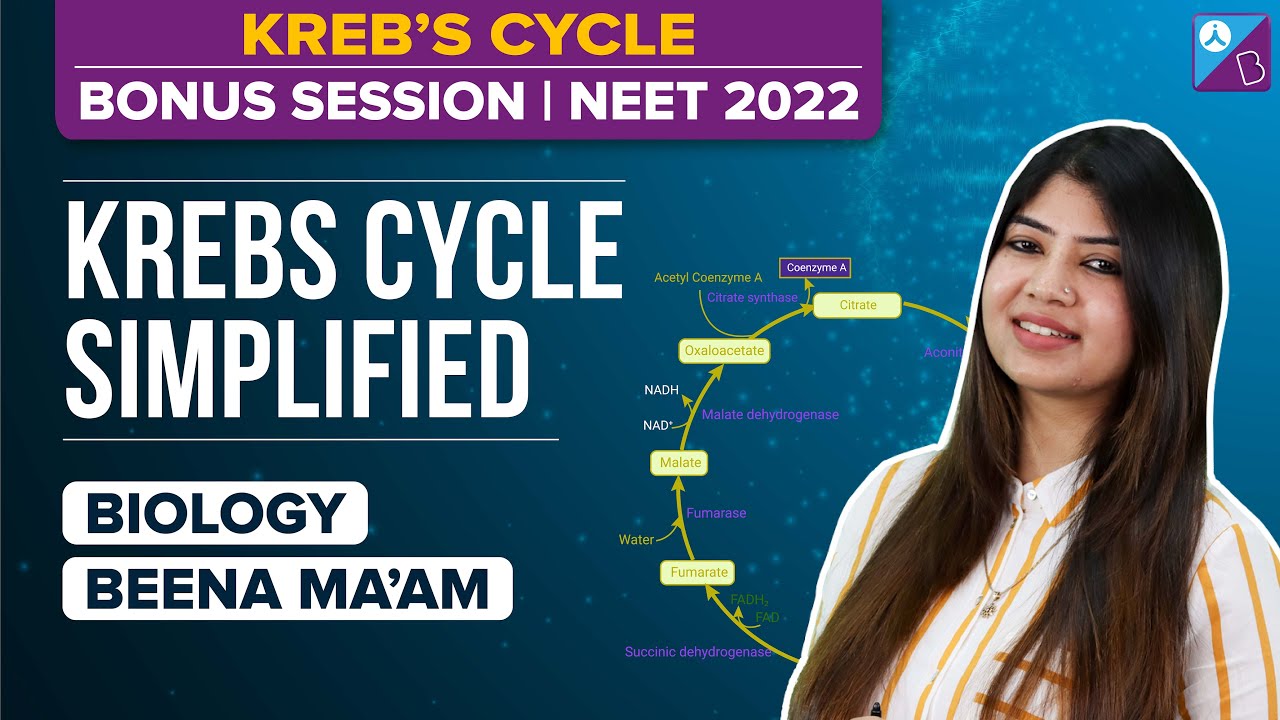Krebs cycle is an eight-step process occurring in the mitochondrial matrix. Acetyl CoA, derived from carbohydrates, proteins and fats is completely oxidised to release carbon dioxide. The energy released is stored in the form of ATP.
Download the Complete Guide to NEET UG Prep
Download Now
1. Product of Krebs cycle essential for oxidative phosphorylation is _______
(a) NADPH and ATP
(b) Acetyl CoA
(c) CO2 and oxaloacetate
(d) NADH and FADH2
Answer: (d)
2. A single molecule of glucose generates _________ molecules of acetyl CoA, which enters the Krebs cycle.
(a) 4
(b) 3
(c) 2
(d) 1
Answer: (c)
3. ___________ accepts hydrogen from malate
(a) FAD
(b) NAD
(c) NADP
(d) FMN
Answer: (b)
4. Which of the intermediate of the Kreb’s cycle is utilised in the formation of amino acids?
(a) Citric acid
(b) Malic acid
(c) Isocitric acid
(d) 𝛼-ketoglutaric acid
Answer: (d)
5. Krebs cycle occurs in aerobic respiration due to
(a) Electron transport chain requires aerobic conditions to operate
(b) Oxygen is a reactant
(c) Oxygen has a catalytic function
(d) All of the above
Answer: (a)
6. Acetyl CoA is formed from pyruvate by__________ reaction
(a) Dehydration
(b) Reduction
(c) Oxidative decarboxylation
(d) Dephosphorylation
Answer: (c)
7. Which of the following is not formed during the Krebs cycle?
(a) Lactate
(b) Isocitrate
(c) Succinate
(d) Both (a) and (b)
Answer: (a)
8. The entry of pyruvate into the TCA cycle is inhibited by the presence of a high cellular concentration of
(a) Pyruvate
(b) NADH
(c) Coenzyme A
(d) AMP
Answer: (b)
9. ATP synthesis is powered by
(a) Coenzyme motive force
(b) cAMP
(c) proton gradient
(d) GTP hydrolysis
Answer: (c)
10. FAD is reduced in which of the reaction of the Kreb’s cycle?
(a) Isocitrate to oxaloacetate
(b) Succinyl CoA to Succinate
(c) Fumarate to malate
(d) Succinate to fumarate
Answer: (d)
Also Check: Krebs Cycle
Recommended Video:
Easy Tricks to Learn Krebs Cycle NEET Biology | How to remember Krebs Cycle Forever

Thanks
Thanks a lot